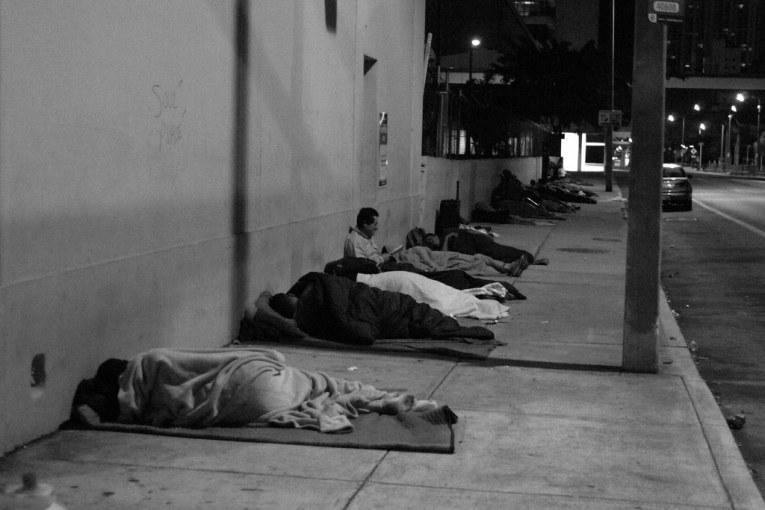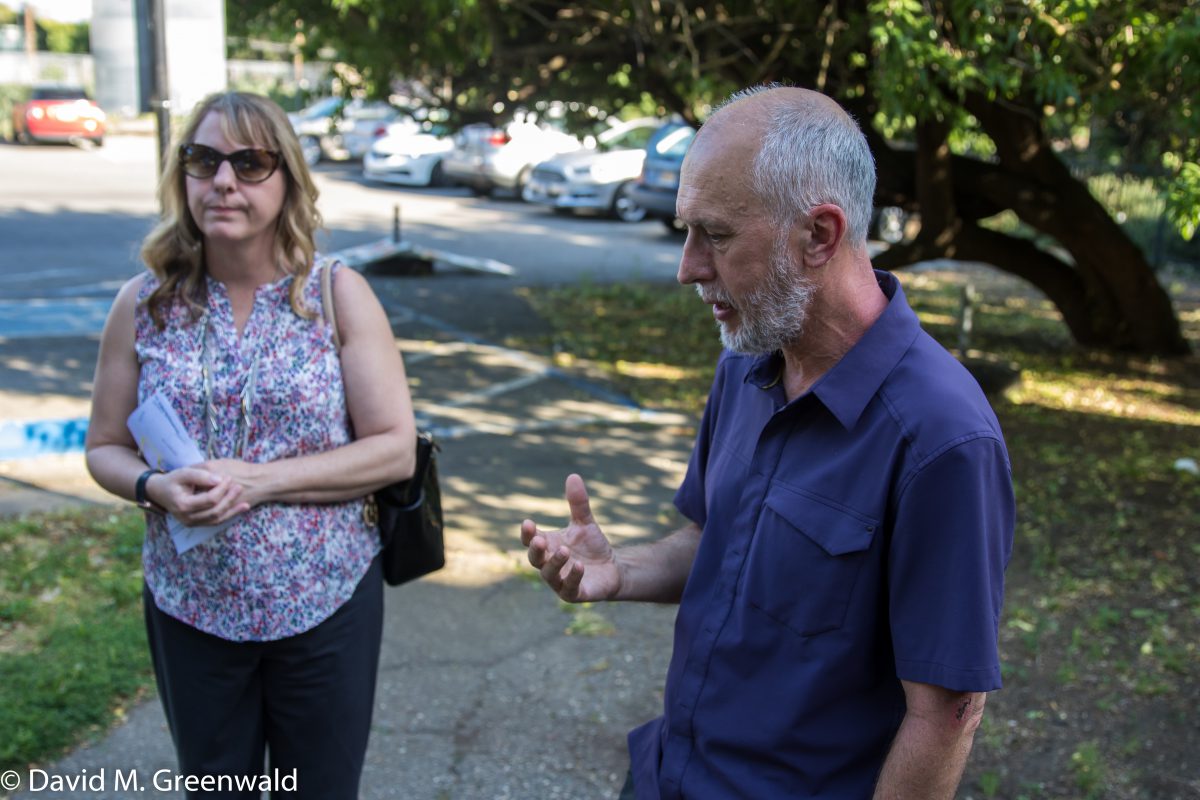

The homeless problem has markedly increased in Davis over the last decade. To give you an idea of just how much, I was just looking at an old article that noted the homeless count in Davis jumped from 114 in 2009 to 146, which was a 28 percent increase. The number is now 190.
That means that the raw number of homeless increased by 32 over an eight-year period and by 44 in the last two years.
Homelessness is not just a problem in Davis – across the state the point-in-time counts are showing a 16 percent increase in homelessness this year. The state budget will provide $1 billion in funding to fight homelessness, including $650 million in emergency homeless aid.
But a lot of that money is going to go to the dozen largest cities (about $275 million in state grants for homelessness prevention measures). Counties are also getting a chunk of money, which is why Yolo County was able to kick in money for the respite center.
Davis will be able to tap into state grants to help with things like the respite center and emergency nighttime shelters as well. But, as part of that new funding, we ought to consider ideas to create local revenue streams as well.
In 2017, then-Mayor Robb Davis pushed for a $50 a year parcel tax, known as the Social Services Tax.
At the time, he called homelessness a top issue facing this community. If anything, it is only getting bigger.
In 2017, Mayor Davis told the Bee: “It’s not a huge number compared to Sacramento and other places, but it is a much more visible homeless population than it was. I believe we can get our arms  around it, but it’s a long walk.
around it, but it’s a long walk.
“If we really want to tackle the most intractable problems … we need a secure funding stream for a long period of time,” he said.
As the mayor explained in remarks before council in May 2017, “We do not currently have the beds we need to house all those in need. We do not have enough beds—even with housing assistance programs—at a price that is affordable to house people in need.”
He viewed providing housing as “only a first step” but a critical one, “because once the roof is there then the wrap-around services that really are about addressing the underlying needs of the population in question become important.”
But in order to do that, we need the resources to build or purchase the housing and run the programs.
And this is not a short-term term fix: “I think we need to remember that we’re dealing with people that have gone down a long road and it’s going to be an equally long road to come back. And so the services will need to be continued over a long period of time, which implies a revenue stream that we need to create within the community.”
“In other words,” the former mayor explained, “this problem will not be dealt with through one-off grants over short periods of time. We need to find out how to generate streams of revenue if we’re really going to attack the challenge that we have.”
That $50 per parcel per year would have created the start of a revenue stream. But it would also have gone for Affordable Housing as well.
As we know from the discussion on the respite center, even with assistance from the county, that piece alone was going to cost the city easily half a million a year.
The needs go beyond that. We clearly need nighttime shelter that extends between current efforts from religious congregations and non-profits. And we need permanent supportive housing with support services.
All of this costs money. However, with the focus on homelessness at the state level, the availability of state and county money to combat homelessness, and the possibility of grants, creates a revenue stream which can help the city put together pieces of the puzzle to really take a bite out of homelessness.
There is always a worry that this type of program is going to cause homeless people to flock to where the services are.
As we noted in 2017, that’s really not a real worry.
Consider the millions that Sacramento is spending now on homeless programs. In early December, the city of Sacramento allocated $22.5 million in expected private and state money to open 500 shelter beds in large semi-permanent tents, cabins, converted motels and scattered existing apartments.
“I just insist following tonight that we follow through with urgency, with passion and with speed,” Mayor Darrell Steinberg said. “Not just raise the money, not just pass resolutions, but actually get more people indoors.”
So if you really are concerned about attracting homeless people to come here for the services, realize that Davis is hardly leading the way in this.
But, as many have pointed out, that’s not really an issue that people make it into. Former Mayor Robb Davis used to talk about the homeless in Davis and point out their local connections.
Rohit Naimpally, who last week presented current and potential future research on reducing and preventing homelessness, said there wasn’t much evidence to support the idea that people move to a location due to the services.
“Most people in a given place experiencing homelessness are from there,” he said. These aren’t people who moved because of weather or services. “These are typically people who at some point had stable housing and no longer have stable housing.”
It is a point that will come up, but it should not drive our thinking here.
Finally, the original plan from Mayor Davis was to support both homelessness and affordable housing. I think the revenue stream approach is a good one. But the cost of affordable housing is sky high and would take a lot more than a $50-a-year parcel tax to approach.
We need to do more on affordable housing as well. There I think the answer is to recreate the increment tax, and that will take an act from Sacramento – not Davis. For now I would suggest we focus the social services tax on creating the housing and programs for homelessness. Fifty dollars a year is just not going to go very far, but cobbled with state and county grants and funding, it could help.
—David M. Greenwald reporting


People, “Housing First” means “you can use drugs and alcohol and stay here”. I call it “Drugs First”. That’s the new way, and THEY will back it with statistics.
As long as Paul’s Place and any Social Services tax support the “Drugs First” housing, I oppose.
And it is time to stop using the Orwellian euphemisms. When I’m in conversation and tell people that the new-progressive way is to house active alcoholics and drug addicts in so-called shelters for the so-called homeless, the most-usual reaction is “WHAT?!!!”.
I realize I’m standing up against a progressive-Orwellian tsunami, holding up my middle finger and saying “f*ck you”.
But if a few more people learn the truth of Drugs First housing today, I will take the plunge.
(And now folks, stay tuned: here come the progressive statistics . . . )
I agree with you Alan (but perhaps not as graphically/emphatically)… but I’d not have a ‘waiting period’ before admission for housing… “but you leave your stash of alcohol, MJ, other drugs at the door”… that’s a reasonable contract… among other things, it means that stash also isn’t available for othe)rs being housed.
Tobacco, containing nicotine, could also be seen as a ‘drug’…
I was in a conversation with a homeless person a couple of weeks ago, and he was discussing the difficulty of staying at the shelter because of the drug/alcohol use, which he’s trying to get away from. And I believe (not sure) the current policy is no drugs to stay there. So as with most such facilities, keeping the drugs out is difficult even with a sober environment policy.
If people are allowed to stay at Paul’s Drugs First Place without having to clean up (if only overnight as the deal to stay out of the elements), then all the more access to drugs for those staying over, and all the more the hastening of death.
I am not opposed to a shelter. Not so thrilled about the fancy design when a series of quonset huts would house more people for less money. Do surveys also show a fancy building with nice rooms is necessary to help the true homeless-by-circumstance get on their feet and mentally healthy?
A-few-weeks’-City-Council-meetings ago the mayor was saying we needed to get the respite center on-line as soon as possible since the cold weather was about to hit. I was scratching my head — as the respite center is a day thing, and it is colder at night (I think some of you know this fact about temperatures). Similarly, why build a fancy Paul’s Place and not instead haul in some trailers if the goal is trying to get people out of the cold? And why allow Drugs First at this or any place?
(Yeah I know, statistics show #blah-blah-blah#)
Davis: Turn yourself around! Turn it upside down!
Actually, the quonset hut concept (with appropriate insulation!), is not a bad idea on many levels. Many successful (many successes, but not always…), like Fourth and Hope (Woodland) house on a “dorm” model… 4 to a room, 1 ba/room, common dining facilities… also requires participation in group meetings. Other referrals/support available.
If I recall correctly, they wanted you to be ‘clean’ for 24 hours prior (but, no testing), but zero tolerance for alcohol, MJ, or drugs, once admitted. Reasonable costs… sliding scale where SS or SSI/SDI could cover, and subsidized by either gov’t private funds for those unable to pay.
For the basics, quonset hut ‘dorms’ (with good insulation/ventilation) with minimal staff to supervise, offer appropriate referrals, etc., would offer good chances of being effective, at nominal costs.
Quonset is a concept, doesn’t have to be literal — I just mean low cost, so more can be housed for the money. I surely wasn’t the only one who saw the Paul’s Place drawing and thought — TOO NICE! I mean, a local architect designed it, for Crissake! Ever heard of ‘off the shelf’? Surely we could house more by not creating a boutique shelter.
And everyone I talk to has the same reaction when I tell them what Housing First really means (Drugs First). But go to a Council Meeting when the subject comes up, and you get the ‘they are just like you and me’, ‘they are our neighbors too’, ‘they are good people’, ‘any of us could end up like them’, ‘volunteer at a homeless shelter like I do and you’ll understand’ crowd.
Me? . . . well we just had two fresh piles of garbage dumped nearby. No new poop buckets at least.